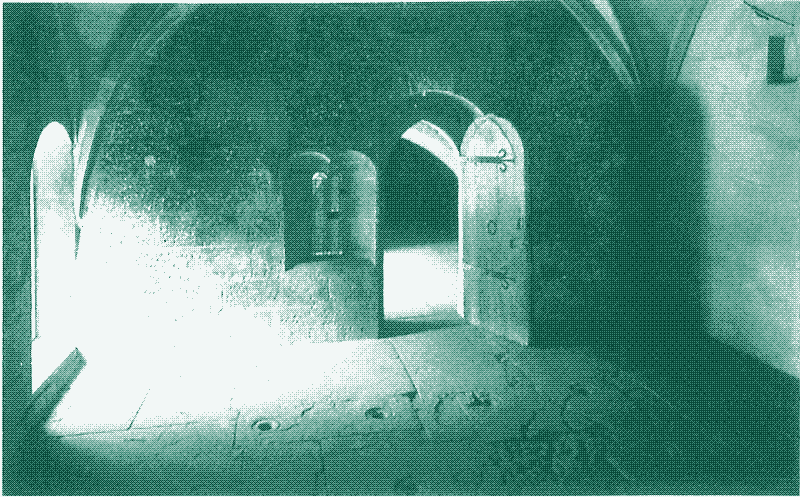
The Romans are credited with the invention of the first smoke-free heating system in Western Europe: the hypocaust. Until recently, historians had assumed that its technology was largely lost after the collapse of the Roman Empire. In fact, however, it lived on in large parts of Europe, and was further developed into the “heat storage hypocaust”, an underground furnace on top of which granite stones would be piled, to then release hot air through vents in the floor. By this means, a room could be kept warm for days with just one firing of the hypocaust’s furnace.
Hypocausts
Hypocausts were heating systems that distributed the heat from an underground fire throughout a space beneath the floor. The heat was absorbed by the floor and then radiated into the room above. The effect on thermal comfort must have been similar to that of a modern-day hot water or electricity-based radiant floor heating system. The Roman hypocaust was characterised by its under-floor flue passages, created by small pillars bearing the floor’s paving slabs. Sometimes, the heat was also fed through cavities in the walls before escaping from the building, thereby warming up the walls, too.
The Romans were not the first to develop a heating system in which the heat from a fire was fed under the floor from one side of a room to the other. The Chinese kang and dikang, the Korean ondol and the Afghan tawakhaneh were based on similar principles and date back to even earlier times. What’s more, the Romans probably learned the technology from the Greeks. Nevertheless, it was the Romans who developed the hypocaust into a more sophisticated heating system, especially in their public bath houses, which were built all across Europe and around the Mediterranean.
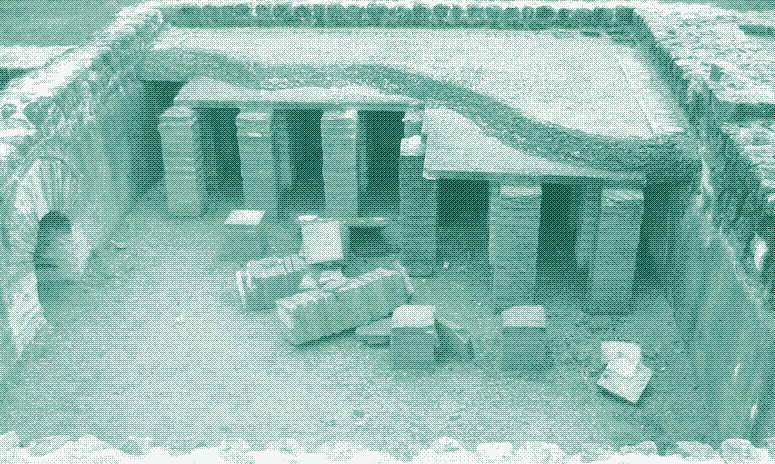
For a long time, historians believed that the fall of the Roman Empire in around 500 AD marked the start of a hiatus in Europe’s use of smoke-free heating. Nevertheless, although most public baths fell into disrepair in the Western Roman Empire, hypocausts continued to be built and used in the Early Middles Ages, especially in monasteries. The technology also lived on in the Eastern Roman (Byzantine) Empire and was adopted in the hammams of the Arabs, who reintroduced the hypocaust to Western Europe when they built the Alhambra palace in the 13th century. 1
Smaller and cheaper systems, using ducts instead of pillars, also continued to be used, especially in smaller buildings. These hypocausts only heated part of the floor, but were much easier to build. We found just such a hypocaust in a remote village in Spain, which is still in use today.
Heat Storage Hypocausts
With the spread of Christianity and its monasteries to Northern Europe, the Roman hypocaust proved too inefficient for the region’s colder climes. The first half of the 14th century, or possibly even earlier, saw the start of the practice of piling up granite stones on the top of the furnace vault to accumulate heat. 12 Far from a simplified medieval imitation, the heat storage hypocaust represented a further stage in the development of this ancient technology. 3
When the firing was complete, the vents in the hot plate were opened and hot air rose from the pile of stones into the room to be heated.
Unlike the Roman hypocaust, which was based on radiant heating, the heat storage hypocaust provided convective heating. The room to be heated featured a perforated “hot plate” above the pile of granite stones. Its perforations remained closed while the fire was burning, so that the smoke was kept out of the room and could escape through the chimney or a cavity in the wall. When the firing was complete and the furnace had been cleaned, the smoke flue was closed by means of a damper, the vents in the hot plate were opened and hot air rose from the pile of stones into the room. 23
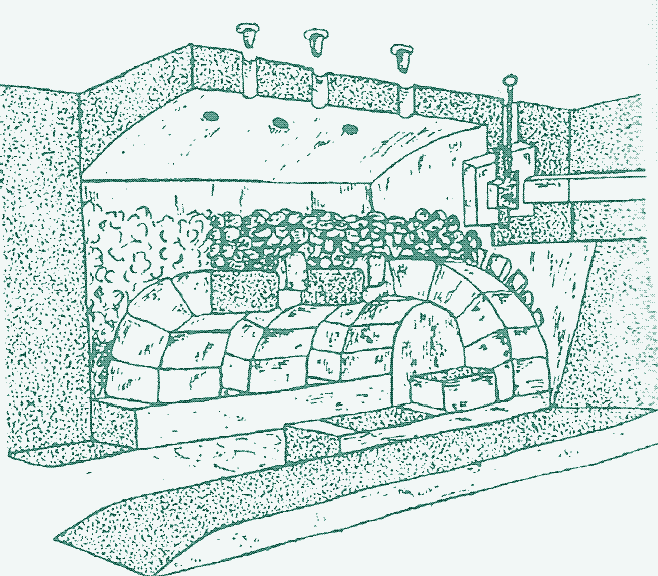
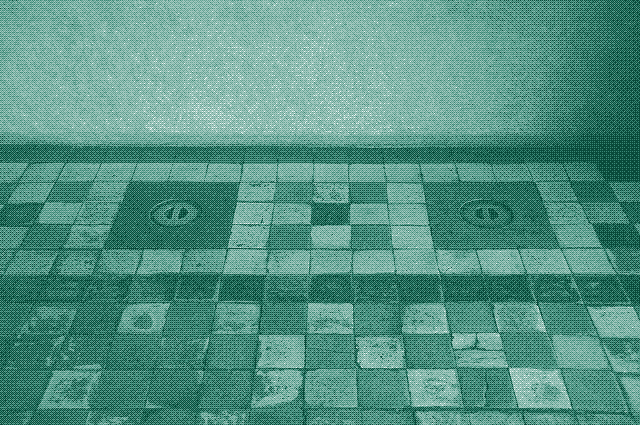
Because of their poor heat storage capacity, Roman hypocausts had to be fired continuously. Adding a stone chamber to create the heat storage hypocaust made it easier to accumulate heat, meaning it was no longer necessary to keep the furnace constantly lit. In 1822, a number of experiments were conducted to establish the effectiveness of a then 400 year-old heat storage hypocaust in Poland’s Malbork Castle. One such experiment involved heating the castle’s 850 square-metre banqueting hall. 13
A Weekly Fire
On 3 April, a cold furnace was lit for three and a half hours using 0.7 cubic metres of spruce wood. When the vents in the hot plate were opened, hot (200 ºC) air rushed into the banqueting hall, raising its temperature from 6 to 22.5°C in just 20 minutes. The air vents were then closed. By the following morning (4 April), the room’s air temperature had fallen to 14°C. The air vents were opened and the temperature rose to 19°C in one hour–without any additional fire being lit.
A full six days after the fire was extinguished, the air rising from the vents had a temperature of 46°C
On 5 April, the temperature of the air escaping through the vents was 94°C and the room temperature rose from 10 to 16°C in half an hour. On 6 April, three days after the fire was extinguished, the air was still hot enough to raise the room’s temperature from 10 to 12°C. Even on 9 April, a full six days later, the warm (46°C) air rising from the vents managed to lift the temperature in the hall from 8 to 10°C.
During his 1438 trip through Europe, the Spanish traveller Pero Tafur wrote that people placed “seats above the holes, also with holes in them. The people then sit down on those seats and unstop the holes and the heat rises between the legs to each one”. 3 This is reminiscent of the footstoves used in Northern Europe during the Middle Ages.
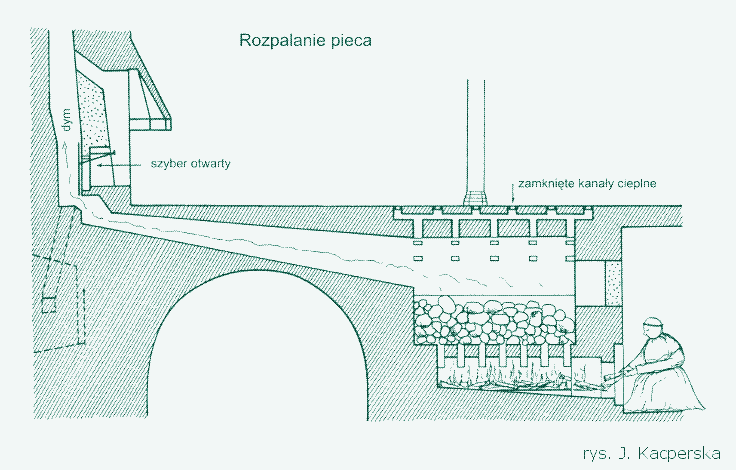
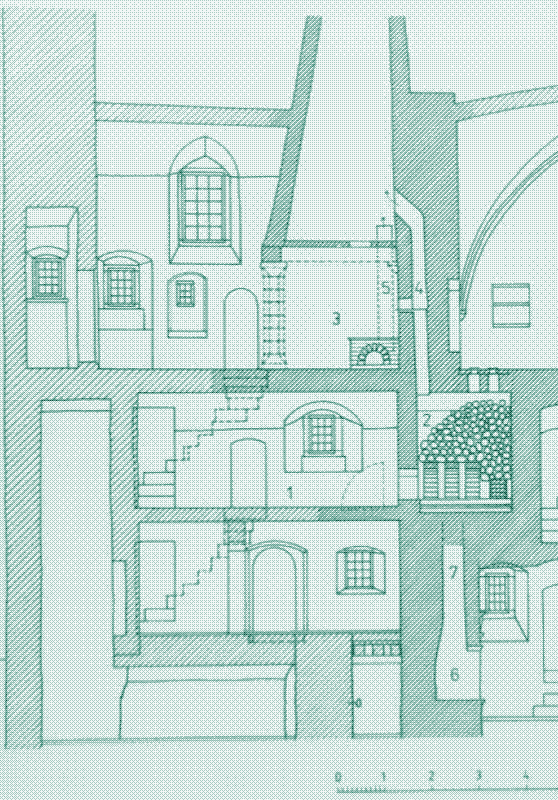
Baltic Sea Region
The heat storage hypocaust was mainly used in the Baltic Region–Northern Germany, Denmark, Sweden, Finland, Estonia, Latvia, Lithuania, and Poland. To a lesser extent, they have been found further to the south and east, in places such as Western and Southern Germany, Switzerland, Austria, the Czech Republic, Hungary and Russia. Most were built in the 1400s and 1500s. 1
Research into the history of heat storage hypocausts continues today. In his groundbreaking 1998 study, Klaus Bingenheimer estimated that Medieval Europe boasted a total of 500 hypocausts, of which 154 were of the heat storage variety. 4 Since then, however, many more have been discovered. For example, while Bingenheimer had evidence for only two heat storage hypocausts in Estonia, a 2009 paper by Andres Tvauri listed 95 heat storage hypocausts, either still standing or whose location had been documented. 2
According to the latest estimates, there must have been at least 800-1,000 heat storage hypocausts around the Baltic Sea
In total, around 500 heat storage hypocausts have now been documented in the Baltic Region and, according to the latest estimates, there must have been at least 800-1,000 of them by the end of the 15th century 1, their use spreading from monasteries and castles to other public buildings, such as almshouses, town halls, guildhalls and hospitals. In Old Livonia, which covered present-day Estonia and Latvia, the technology also found its way into private homes. In Tallinn, Estonia’s capital, a heat storage hypocaust was not the exception, but the rule, and at least 54 such systems have been discovered there. 2
Hypocausts in Tallinn
Andres Tvauri’s overview of the heat storage hypocaust in Estonia, one of the few available resources in English language, provides a wealth of technical details. Special covers or plugs, made of metal, stone or fired clay, were made to seal the hot air vents in the floor’s “hot plates”. Small ceramic dishes have been found, placed on the hot stones directly under these venting holes. It is assumed that water was poured on them, to produce steam and thereby increase the air humidity level. 2
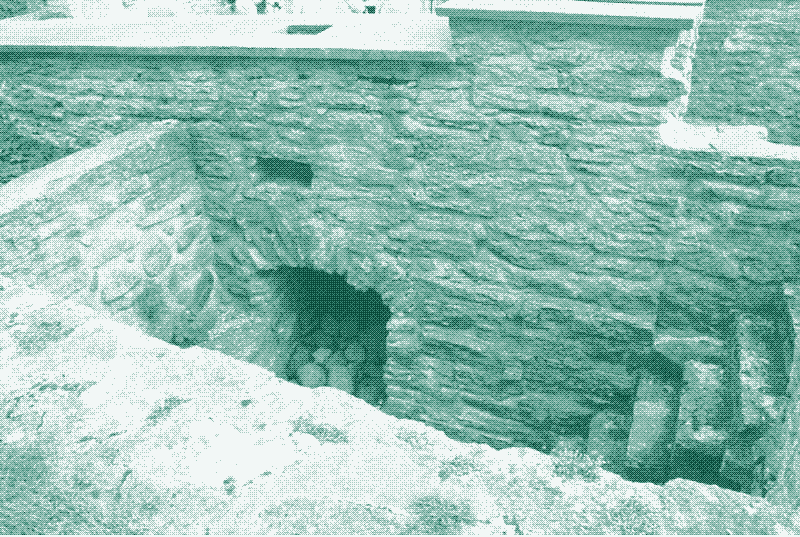
![Images: Remains of heat storage hypocausts in Tallinn, Estonia. Source: [^5] Kaarel Truu, 2016. In Tallinn’s homes, the subterranean stoker’s room of the hypocaust and the heated bedroom on the ground floor were usually connected by a flight of stairs.](https://solar.lowtechmagazine.com/2017/03/heat-storage-hypocausts-air-heating-in-the-middle-ages/images/dithers/tallinn-hypocaust_dithered.png)
The furnace was covered with a barrel vault on which the stones, with diameters of 40 to 50 cm, were piled to accumulate heat. The vault’s bricks were laid to form three or four arches, with intervals of about 20 cm between them and medieval builders probably used an old vat in helping to shape the arches of the vault. When the furnace was completed, a fire was built in the vat.
A furnace’s dimensions would depend on the size of the room to be heated. In private homes, where only the bedroom was heated, it would be one to two metres long, a little more than a metre wide and 50 to 60 cm high. In public buildings and monasteries, where large halls and rooms had to be heated, the furnaces would be much larger.
Tile Stoves
Heat storage hypocausts were only used for a fairly short period of time. By the fifteenth century, glazed tile stoves were already spreading through the Baltic countries. The tile stove is a radiant heating system with an interior maze of brick or stone channels designed to accumulate a fire’s heat. It was more convenient to use and to build than the hypocaust, not to mention more energy efficient, as it takes less energy to heat people than to heat spaces
Although it was possible to heat at least two separate rooms by means of one furnace, as a rule, the hypocaust was located under the heated room or rooms, which were always on the ground floor. Tile stoves could be built anywhere, even on a building’s upper floors. Over the course of the 16th century, Old Livonia stopped using the heat storage hypocaust, which was replaced by a glazed tile stove, often built exactly where the hypocaust’s furnace had previously stood. Elsewhere, in Poland for example, some heat storage hypocausts remained in use until the 18th and 19th centuries.
Reactions
To make a comment, please send an e-mail to solar (at) lowtechmagazine (dot) com. Your e-mail address is not used for other purposes, and will be deleted after the comment is published. If you don’t want your real name to be published, sign the e-mail with the name you want to appear.
Reactions
Nancy E Sutton
Brilliant! Thank you for this exciting history : )
Jan Steinman
Glad you mentioned ondol, the Korean equivalent. When I lived in Korea in the early 1980s, ondol was still widely used, especially in the countryside.
The fuel is cylinders of charcoal with holes through its length. It was put into horizontal flues that run under the floor, then to an elbow in the wall, and up to a chimney.
However, it was considered a public safety menace. Unless the underfloor flues were properly maintained, carbon monoxide would seep into the room.
Once or twice a year, you’d hear of an entire family who died, occasionally killing the odd American GI, too. The threat was to the point that the local base commander forbid living off-site.
I don’t know if ondol is still used. When it worked right, it was lovely! Warm floors are so nice!
But when it failed, it failed catastrophically, at least for the unfortunate residents.
I wonder if in your research you uncovered any tales or evidence of the CO poisoning potential of these ancient hypocausts?
kris de decker
@ Jan Steinman
I don’t know the answer for sure but it seems to me that CO poisoning was not a major problem with the heat storage hypocaust. It was fired intermittently, and once the fire was extinguished, only hot air could come through the vents for the following hours and days. The Korean ondol is fired more regularly, which increases the chance that people sleep while the fire is burning.
M. Ehrlich
@ kris de decker
You are correct, the CO poisoning would not happen as the heat plate perforations/ air vents were not opened until the fire had burnt.
Like with wood burning stoves/furnaces still present in older houses in Estonia and Latvia, you cannot close the damper when there are still flames, the opportune moment for maximum effectiveness (as not to lose too much valuable heat) to close the damper is when the flames are gone, leaving just live coals/ embers that do not emit CO.
Necessity is mother of invention. Like Tvauri explains, these heat storage hypocausts rather common in 14th-15th century Livonia – where the climate was much colder compared to the Central and Western Europe – were born combining the ancient method of heat storage (stones) used by the indigenous inhabitants of present day Finland, Estonia, and Latvia in their saunas for hundreds of years with the hypocaust technology originating from Rome used by monks and religious orders.
soapweed
‘Warm’ is a vague and ambiguous term….. doubtful the upper floors of a structure of any material were comfortable in today’s context. Second floor above the warming mechanism would be marginal, third floor would be for the cure of hot flashes.